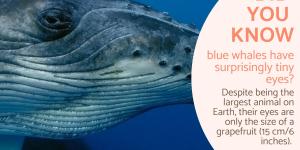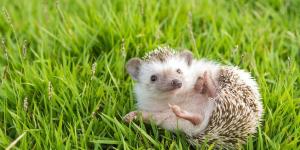10 Interesting Facts about Otters


These small to medium-sized mammals inhabit a range of aquatic environments worldwide, including rivers, lakes, and oceans. There are 13 recognized otter species across the globe. Belonging to the family Mustelidae—which also includes weasels, badgers, and ferrets—otters are exceptional swimmers and divers. But beyond their endearing looks and playful antics, otters possess a unique blend of traits, behaviors and adaptations that distinguish them from other animals.
In the following AnimalWised article, we will explore the 10 interesting facts about otters that will blow your mind.
- They use tools
- They come in a wide range of sizes
- They regulate aquatic ecosystems
- They are carnivorous
- They are highly social animals
- They live in both aquatic and land environments
- They have complex communication systems
- They play around a lot
- They were once trained by humans
- They are important in many myths and traditions
They use tools
Contrary to popular belief, tool use isn't solely a human trait. Several animal species, including the resourceful sea otter, have demonstrated remarkable ingenuity in their use of tools.
These aquatic mammals employ a clever technique to crack open their prey: they place a rock on their chest and repeatedly strike the hard-shelled creature against it. With each impact, the shell weakens until it finally yields, revealing the delectable contents. Some sea otters even reverse the roles, holding the prey and striking it with the rock.

They come in a wide range of sizes
While otters aren't typically considered small mammals, their size can vary significantly. The eastern small-clawed otter is one of the smallest species, weighing between 2.7 and 5.4 kilograms (6 to 12 pounds) and measuring 40 to 65 centimeters (16 to 26 inches) long. Slightly larger, the neotropical otter ranges from 36 to 66 centimeters (14 to 26 inches) in length and weighs between 5 and 15 kilograms (11 to 33 pounds). The giant otter, the species pictured, is the largest and heaviest otter, reaching nearly 2 meters (6.5 feet) long and weighing between 22 and 32 kilograms (49 to 71 pounds).

They regulate aquatic ecosystems
Otters, as top predators, play a pivotal role in maintaining the delicate balance of their aquatic ecosystems. Their impact on population control is particularly significant, as demonstrated by the sea otter (Enhydra lutris). By preying on sea urchins, a voracious consumer of kelp, sea otters help to prevent kelp forests from being decimated. This ecological relationship highlights the crucial role of top predators in preserving biodiversity and ecosystem health.
Did you know otters can sometimes be aggressive? Explore this surprising side in our additional article.
They are carnivorous
Otters are carnivores and have a diverse diet. While they may prefer fish, their diet also includes clams, snails, crabs, sea urchins, frogs, birds, and more. While they primarily eat aquatic prey, they may also consume terrestrial animals, such as birds or insects.
Sea otters are known for their high metabolic rates, which require them to consume a large amount of food to maintain their body temperature and energy levels. They can eat up to 20% of their body weight in food each day, often in four or more meals. This is especially important in cold water environments where they need to conserve heat.
They are highly social animals
Otters are known for their sociable nature, often living in groups that exhibit remarkable cooperation.
While the social structure varies among species, many otters form family groups of up to 20 individuals. They cooperate in various activities, including feeding, playing, and caring for young. While females are often the primary caregivers, males can also play a role in raising the young, especially in some species.
Want to know more? Explore how long otters live and what affects their lifespan in another one of our articles.

They live in both aquatic and land environments
While many otter species spend a significant portion of their lives in water, they are not entirely aquatic. This means they still need to come onto land for certain activities, such as resting, mating, and raising their young. Additionally, they need to rest and sleep on land to conserve energy and avoid predators.
Despite not being exclusively aquatic, they have developed features such as dense fur for insulation, streamlined bodies for efficient swimming, and webbed feet for propulsion. Additionally, they can close their nostrils and ears to prevent water from entering when submerged.
Interested in more otter trivia? Discover the truth about otter pouches in our detailed article.

They have complex communication systems
Otters are highly social animals with complex communication systems. They use a variety of vocalizations, such as grunts, squeals, whistles, and trills, to convey different messages. Not only that but, just like humans, different otter species may have their own "dialects" or variations in their vocalizations. Mothers even often sing lullabies to their pups, soothing them and helping them sleep.
In addition to vocalizations, otters also communicate through physical touch, rubbing, and grooming, which helps to strengthen social bonds within their groups.
Want to know how otters relax? Get the scoop on their sleep routines in our related article.
They play around a lot
Otters are famous for their playful behavior, which is not only entertaining but also serves several important functions. Scientists suggest that their playful antics might be akin to "laughter," releasing endorphins and enhancing their overall well-being.
Play is crucial for young otters, helping them develop essential skills like agility, coordination, and problem-solving—abilities vital for their survival as both hunters and prey. For instance, otters often engage in lively games of chase and tag, which strengthen their social bonds and sharpen their hunting techniques. They also enjoy playing hide-and-seek, sometimes even with humans.
Did you know that sea otters are famous for their playful habit of creating bubble baths? By rubbing seaweed on their fur, they not only remove parasites but also enjoy the soothing sensation of bubbles.
They were once trained by humans
Historically, certain otter species were trained to assist humans in fishing, particularly in regions like Europe, Africa, and Asia. They were taught to catch fish and drive them into nets. While this practice is less common today, it still exists in some parts of Asia.
It's important to note that training wild animals is generally considered unethical, as it can negatively impact their natural behaviors and well-being. This historical practice offers a glimpse into the complex relationship between humans and the natural world. Check out the pros and cons of having an otter as a pet in our additional article.
They are important in many myths and traditions
Otters have been revered and admired by various cultures throughout history. Their playful and intelligent nature has made them symbols of curiosity and joy in many indigenous traditions. Here are some examples of how otters are perceived around the world:
- Many Native American tribes have stories and legends featuring otters. In some traditions, otters are seen as tricksters or shape-shifters, while in others, they are revered as guardians of waterways. Otters are often depicted on totem poles, symbolizing intelligence, playfulness, and a connection to water.
- The Inca people believed that otters were messengers between the human world and the spirit world. They were often depicted in art and textiles.
- In Japanese folklore, otters are often associated with water spirits and are believed to bring good luck.
- In Hinduism, otters are sometimes seen as symbols of purity and innocence.
- Australian Aboriginal mythology often portrays otters as tricksters or shape-shifters, highlighting their complex role in cultural stories.
Fascinated by otters? Discover the wide range of otter species and their habitats in our related article.

If you want to read similar articles to 10 Interesting Facts about Otters, we recommend you visit our Facts about the animal kingdom category.
- Animal Diversity Web (2024). Available at: https://animaldiversity.org/










